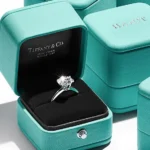There are various terms in branding like visual identity, brand design, and brand personality that often capture attention. However, one term that doesn’t always receive the spotlight it deserves is “brand communication strategy.” In this piece, we delve into the significance of this strategic branding element and its power to influence hearts and minds while shaping perceptions.
The Crucial Role of Brand Messaging
Contrary to some beliefs, branding is more than just a collection of visual elements intended to set a brand apart from its competitors. Although aesthetics contribute to brand distinctiveness, the real power lies in messaging. When consumers make purchasing decisions, they quickly move beyond visual appeal to seek answers to essential questions: How can this brand, product, or service enhance my life? Why should I care?
This is where a brand’s communication strategy comes into play. It serves as the bridge between the brand and its audience, addressing these fundamental queries. Brands don’t merely exist on physical street corners, digital platforms, or billboards. Instead, they reside, thrive, and even perish within the minds of their audience.
Brands as Perceived Entities
Marty Neumeier, in his influential book “The Brand Gap,” profoundly stated: “A Brand is not what you say it is, it’s what they say it is.” Despite the substantial financial investments made by brands to shape their image through extensive content marketing efforts, the ultimate perception is formed in the minds of consumers. Regardless of the carefully crafted marketing messages, it is the audience who interprets and defines the brand’s meaning.
In essence, a brand’s true existence hinges on the mental landscape of its consumers. Understanding this psychological space and strategically molding brand communication within it can make all the difference in creating a lasting impact.
Shaping Brand Perceptions Through Effective Communication
Brands, often defined in numerous ways, find their essence encapsulated in a single word: perceptions. In the mental realms of the audience, a brand takes shape, molded by the individual perceptions of those who encounter it. Every interaction becomes a brushstroke, painting a picture of the brand’s relevance, credibility, and allure in the minds of consumers. Despite a business’s level of brand awareness, it lacks direct control over how consumers perceive it. One might wonder, “What’s the purpose of branding if we can’t dictate perceptions?”
The power lies in influence rather than control. While brand builders can’t dictate audience perceptions, they wield significant influence. This influence is harnessed through a strategic communications approach that permeates various touchpoints, both traditional and digital. This approach, known as the Brand Communication Strategy, becomes the catalyst for shaping narratives that resonate with audiences.
The Intersection of Neuroscience and Communication
In the ever-evolving landscape of neuroscience, profound insights into the human brain have emerged, revealing intricate patterns of behavior and decision-making. Scientists delve deeper each year, uncovering the mysteries of human actions and motivations. One vital discovery centers on our emotional limbic system, a core driver of decision-making. Remarkably, patients with brain damage affecting their emotional centers struggle even with the simplest decisions.
So, what does this mean for marketing communications? The key to capturing the hearts and minds of the audience doesn’t lie in intellectual persuasion but in emotional resonance. Effective communication bypasses the logical pathways of the brain and speaks directly to the heart, forming powerful connections that influence perceptions and decisions.
Crafting an Effective Brand Communication Strategy
In today’s dynamic landscape, capturing consumer attention demands a nuanced approach that goes beyond a single core message. Modern consumers require an average of 7-8 touchpoints to even notice a brand, emphasizing the need for a comprehensive brand communications plan tailored to specific buyer personas.
Step 1: Understand Your Audience’s Journey
Understanding your audience goes beyond basic demographics and psychographics. While these tools provide insights, they don’t unveil the complete picture of your ideal customer. Delving into your audience’s journey offers profound insights into their lives, enabling you to connect with them on a deeper level across various communication channels.
Ask essential questions:
- Where do they come from?
- Where are they headed?
- What goals are they striving to achieve?
- What obstacles impede their progress?
By answering these questions, you unearth the essence of your audience’s identity. This profound understanding illuminates why your brand’s existence and the solutions it provides hold paramount significance in their lives.
Step 2: Understand Their Pain Points and Emotional Connections
Delving into your customer’s journey allows for genuine empathy. Recognizing the significance of their starting point, their destination, their aspirations, and the hurdles they face is vital. While some marketers rush into the sales pitch, astute brand builders invest time here, reaping substantial benefits later.
To quote Abraham Lincoln, “Give me six hours to chop down a tree, and I’ll spend the first four sharpening the axe.” Understanding precisely what their journey and obstacles mean to them, and the emotions they evoke, equips a brand with a sharpened tool.
Step 3: Define Your Position
Before the brand communication strategy takes flight, meticulous groundwork is essential. Brand strategists conduct thorough research, employing creative thinking to uncover unique differentiators and value propositions, ultimately carving out a distinct market position for the brand. This positioning sets the brand apart in the competitive arena, articulating its unique qualities. This position must be crystal clear before crafting a single message.
Step 4: Define Your Value Clearly
Once you’ve pinpointed your unique position and differentiator, the next step is gaining absolute clarity on the value this position holds for your audience. Essentially, you need to articulate what this position signifies, why it matters to the audience, and ultimately, how it will enhance their lives. This clarity in both position and value forms the foundation of an effective communication strategy; no message should be crafted without this foundational understanding.
Step 5: Craft Your Core Message
Having outlined your position and its clear value to the audience, it’s time to craft your core message. While the core message is often seen as the linchpin of the communication strategy, it serves to distill the key messages a brand should convey. However, it does not function as a tool to be repeatedly used by the brand manager. Instead, it provides brand representatives with a clear understanding of the fundamental message. Think of it as planting a flag, summarizing the overall message, but it’s not the versatile tool for ongoing use—that role belongs to the next step.
Step 6: Refine Your Key Messages
While the core message provides a general direction for the messaging, more nuanced details are necessary. In today’s complex brand landscape, numerous touchpoints represent the frontline of the brand. A single core message won’t suffice for these diverse touchpoints. This complexity underscores the need for a coordinated effort in your brand communication strategy. The positioning strategy, the value proposition, and the core message are all integral components of a series of key messages. These messages must seamlessly collaborate, shaping audience perceptions and molding the desired brand image. It’s crucial to clarify precisely what you want your audience to understand about your brand, influencing their perceptions to create the intended brand image.
Step 7: Infuse Meaning and Emotion
Once you have a detailed list of key messages, it’s time to dissect these messages to understand the emotions each one aims to evoke. Since most of our decisions stem from our emotional responses, your branding messages must resonate emotionally. Each message should be tailored to appeal to specific emotions, using language and tone that elicits the desired emotional response. It’s essential to recognize that the goal isn’t to make your audience fall in love with your brand through a single message. Instead, by crafting messages steeped in empathy and emotion over time, a genuine connection with your audience will naturally develop.
Select Your Brand Communication Channels
Imagine a time when establishing a business, let alone building a brand, limited your communication avenues to expensive options like TV, radio, and print media, which were often financially out of reach. Today, entrepreneurs have a wealth of choices, and all it takes is a series of consistently well-crafted messages designed to appeal to the heart. Here are some of the most potent contemporary digital marketing channels to disseminate your brand communication effectively:
Social Media Marketing
While it’s true that organic reach on certain social media platforms has diminished, the fact remains that your audience still congregates on these platforms and within specific social groups. Social media marketing continues to be a vital component of a robust marketing communications strategy because it facilitates user-centric networking and online social interactions. With a bit of exploration, you can discover highly engaged groups and actively participate in these communities, enhancing your brand’s presence.
Email Messaging
Email marketing gained prominence in the late 90s when open rates were as high as 90% (remember Tom Hanks’ excitement in “You’ve Got Mail”?). Unfortunately, marketers overused it, tarnishing its reputation. However, today, email marketing is more effective than ever due to the “permission” filter, allowing consumers to control who contacts them. Metrics such as open rates, click-through rates, and opt-outs enable brands to monitor their performance and refine their communication strategy. Email automation further enables brands to nurture relationships by consistently delivering value, fostering customer engagement.
Website Communication
Your website often serves as the initial point of contact with your audience. Regardless of whether your traffic comes from marketing efforts like search engine optimization (SEO), social media, or referral links, your website’s messaging must reassure visitors that they’ve landed in the right place, emphasizing a unique selling proposition. While many businesses boast about their achievements and founders, a strategic communication strategy ensures your website conveys crucial key messages imbued with emotion, shaping perceptions from the very first interaction. Incorporating lead magnets and compelling calls to action, your website guides visitors onto an email nurturing journey, leading them to their eighth touchpoint and a realization that your brand is one to watch.
YouTube Content
YouTube, although a social media platform, stands as the world’s second-largest search engine, attracting billions of users seeking answers to their questions or indulging in the occasional cat video. Brands leveraging a well-thought-out communication strategy and combining it with informative videos, demonstrating an understanding of the emotions tied to the problems, earn a double dose of trust. This unique blend of value and empathy swiftly transforms leads into loyal customers, illustrating the power of strategic video content in building brand allegiance.
Podcast Content
Podcasts offer yet another avenue, akin to YouTube, to provide valuable content and offer solutions to listeners’ problems. Considered the modern-day radio, podcasts present a platform where long-form advertisements seamlessly integrate into informative discussions. For marketers focused on building strong brand relationships through value and familiarity, podcasts provide a potent tool. By engaging with prospects regularly, and helping them solve their challenges, successful marketing teams across various industries have harnessed the podcast medium effectively.
Conclusion
In the realm of branding, the art of shaping perceptions among potential customers is paramount. Strategic brands meticulously consider every tool of influence that molds these perceptions. Among these tools, the brand communication strategy reigns supreme. Crafting communication that resonates is akin to wielding a sharp axe, cutting through the noise effectively. Therefore, dedicating ample time to develop this strategy proves invaluable. If you’ve gained fresh insights into brand messaging or if you encounter challenges in crafting compelling communication, I welcome your thoughts and questions. Feel free to share your comments below; I’m eager to hear from you!







![The Ultimate Guide of telling a Compelling Brand Story [With Examples]](https://naumandigital.com/wp-content/uploads/2023/02/4-600x400.jpg)
![What is Undifferentiated Marketing [Examples, Pros & Cons]](https://naumandigital.com/wp-content/uploads/2023/10/Coca_Cola_Marketing_Strategy_202-600x400.jpg)
![Target Audience vs Target Groups [Explained]](https://naumandigital.com/wp-content/uploads/2023/02/17-600x400.jpg)